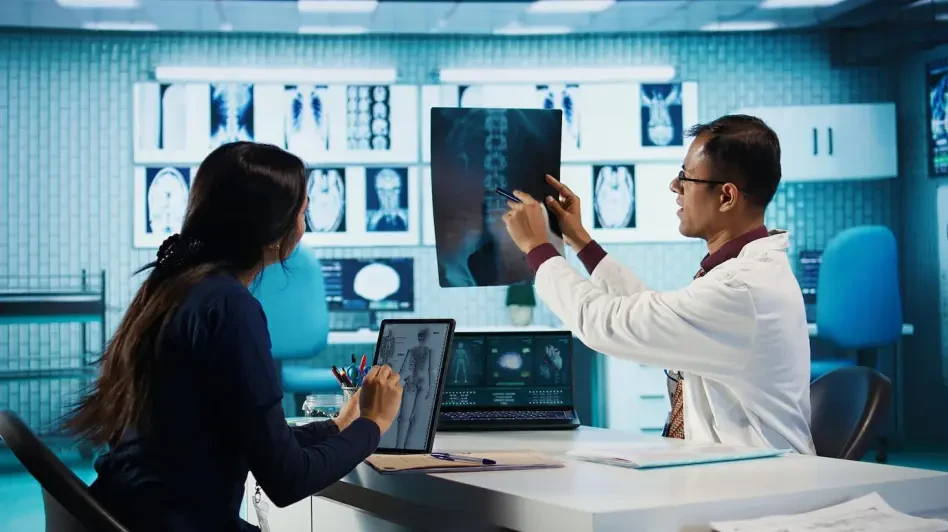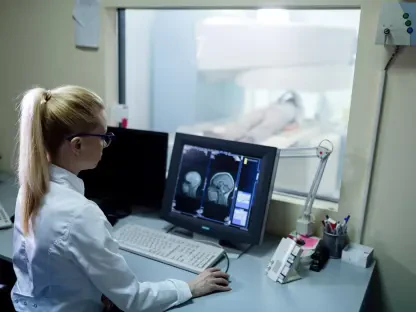Saskatchewan has recently emerged as a frontrunner in the field of medical imaging by significantly increasing the availability and efficiency of diagnostic services, mainly through the use of Computed Tomography (CT) and Magnetic Resonance Imaging (MRI) scans. The province’s healthcare system reached an impressive milestone in the 2024-25 period by providing over 250,000 scans, underscoring the government’s dedication to advanced healthcare. This achievement emphasizes Saskatchewan’s strategic focus on enhancing patient outcomes and reducing wait times for diagnostic procedures. By investing in modern technologies and expanding medical services across the region, the government has demonstrated a commitment to revolutionizing medical imaging. This transformation has not only improved accessibility but has also positioned Saskatchewan as a pioneer in healthcare innovation, setting a benchmark for others to follow.
The Impact of Advanced Imaging Technologies
In contemporary medicine, the roles of CT and MRI scans have become indispensable, providing healthcare professionals with critical tools for diagnosis and treatment planning. A CT scan is a sophisticated imaging procedure that employs computerized X-rays to generate detailed cross-sectional images of body structures. This technology is particularly effective in detecting abnormalities such as tumors and diagnosing various conditions by offering a clear view of the intricate structures within the body. MRI scans, conversely, offer three-dimensional anatomical images without the need for invasive techniques, utilizing magnetic fields and radio waves. These scans play a crucial role in accurately diagnosing diseases and monitoring treatment progress. The innovations in CT and MRI technologies have provided physicians with enhanced capabilities to make precise diagnoses, leading to more effective treatment plans and improved patient care outcomes.
Saskatchewan’s healthcare policy has significantly boosted the accessibility of these diagnostic technologies, allowing for faster and more widespread availability across the province. This advancement is a direct result of the government’s substantial investments in medical equipment and imaging services, which have paved the way for expanded access to crucial diagnostic tests. By decentralizing these services and making them more readily available to residents, especially those far from urban medical centers, Saskatchewan has addressed one of the primary challenges in healthcare — prolonged wait times. This strategic expansion ensures that patients receive timely diagnoses, enabling healthcare professionals to address medical issues promptly and effectively. The government’s commitment to equipping medical facilities with state-of-the-art imaging technology has been a pivotal factor in transforming the province’s healthcare landscape.
Strategic Investment and Policy Initiatives
Saskatchewan’s government, led by Health Minister Jeremy Cockrill, has been instrumental in enhancing medical imaging services through strategic investments and initiatives. These efforts have primarily focused on improving access to diagnostic imaging and ensuring high-quality care for all residents, regardless of location. A standout initiative is the introduction of Positron Emission Tomography (PET) scans into the province’s medical imaging repertoire. PET scans, which provide insights into biochemical functions within tissues, offer the distinct advantage of detecting diseases at earlier stages compared to CT or MRI scans. By bringing PET scan technology to the forefront of Saskatchewan’s medical services, the government aims to improve diagnostic accuracy and treatment outcomes, offering patients a better prognosis through early intervention.
In tandem with these technological advancements, Saskatchewan has also been lauded for maintaining some of the shortest wait times for imaging services across Canada, as reported by the Canadian Institute for Health Information (CIHI). The province boasts the shortest wait time for CT scans at the 90th percentile among all Canadian provinces, underscoring the success of its healthcare strategies. Saskatchewan also ranks third lowest for MRI scan wait times, a commendable feat that highlights the efficiency of its diagnostic services. These accomplishments have been driven by policies like the Patients’ Choice legislation, which introduced private-pay MRI and CT services, allowing for increased capacity in the public healthcare system. By incentivizing private providers to conduct public scans, this legislation has effectively augmented imaging service availability, reducing wait times without compromising quality.
Expanding Capacity through Innovation
The Patients’ Choice legislation has played a pivotal role in Saskatchewan’s ability to expand imaging capacity and reduce wait times. Passed in 2016, this legislation introduced a “two-for-one” policy, whereby private providers perform an additional scan at no cost for every private-pay scan conducted, directly benefiting patients on the public waiting list. This innovative approach has resulted in over 20,900 additional MRI scans and 1,700 CT scans being added to the public healthcare system. By balancing private contributions with public healthcare needs, Saskatchewan has created a more robust imaging service framework that meets patient demand while maintaining high standards of care.
Moreover, Saskatchewan has adopted a comprehensive categorization system to prioritize imaging services based on medical urgency. The system categorizes cases into four types: Type 1 Emergency requires scans within 24 hours, Type 2 Urgent within 7 days, Type 3 Semi-urgent within 30 days, and Type 4 Non-urgent within 60 days. This classification ensures the efficient allocation of resources, facilitating timely imaging for patients with the most critical needs. By prioritizing cases such as spinal cord injuries as Type 1 and treating chronic joint pain as Type 4, Saskatchewan efficiently manages patient care and enhances healthcare delivery. The province’s focus on strategic resource management has ultimately contributed to improved patient outcomes and higher healthcare service standards.
The Future of Medical Imaging in Saskatchewan
Saskatchewan’s commitment to improving medical imaging extends to continuous investments in state-of-the-art equipment and technologies. Over the past five years, the province has prioritized replacing outdated equipment, achieving the replacement of six CT scanners and one MRI scanner. In 2024, a new mobile MRI scanner was added to Regina General Hospital, funded by private philanthropy, symbolizing successful public-private partnerships in healthcare. With plans to allocate an additional $6 million in the 2025-26 budget, the government aims to support more than 10,000 additional diagnostic imaging procedures. This continuous investment reflects Saskatchewan’s dedication to enhancing its medical imaging capacity, ensuring high-quality care for residents.
Statements from medical executives, such as Richard Dagenais, highlight the province’s commitment to providing high-quality and accessible healthcare. Dagenais emphasizes the critical role that healthcare professionals play in delivering exceptional care, supported by government initiatives and partnerships with healthcare foundations. This dynamic collaboration between government, medical professionals, and community stakeholders has positioned Saskatchewan as a leader in healthcare innovation, revolutionizing its medical imaging capabilities to meet evolving patient needs. Looking ahead, Saskatchewan’s healthcare strategy reflects a proactive approach, ensuring resilience and adaptability in an ever-changing medical landscape.
A Model for Proactive Healthcare Management
In modern medicine, CT and MRI scans are indispensable tools for diagnosis and treatment planning. A CT scan is a sophisticated imaging technique using computerized X-rays to create detailed cross-sectional images of the body’s internal structures. This technology excels in detecting abnormalities like tumors and diagnosing a variety of conditions, providing a clear view of intricate body structures. In contrast, MRI scans produce three-dimensional anatomical images through magnetic fields and radio waves, without invasive procedures. They play a crucial role in diagnosing diseases accurately and monitoring treatment progress. Innovations in CT and MRI technology have equipped physicians with enhanced tools for precise diagnoses, leading to more effective treatments and improved patient care.
In Saskatchewan, healthcare policy has significantly increased the availability of these technologies, thanks to substantial investments in medical equipment and imaging services. By decentralizing services, Saskatchewan has reduced wait times, ensuring timely diagnostics. The government’s dedication to advanced imaging technology has been pivotal in transforming the province’s healthcare landscape.









